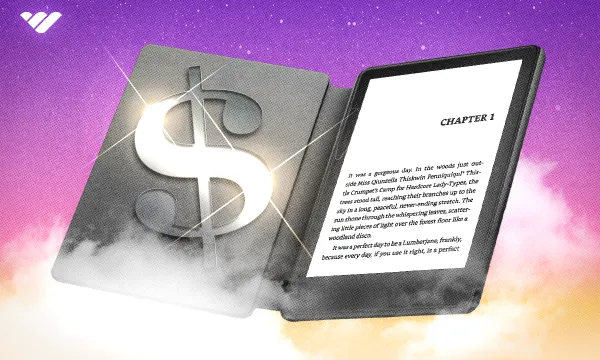Have you ever wanted to write an ebook but felt stuck in front of a blank page and didn’t know where to start? That’s perfectly fine—it happens to everyone.
If you’ve ever written blog posts, newsletters, or even long educational LinkedIn posts that capture your audiences’ attention, guess what? You have material for an ebook. It’s simply a matter of repackaging.
In this article, I’ll take you through the nuts and bolts of making money with eBooks without creating them from scratch. I’ll share my lessons learned from this work and tips from other well-known creators who have done the same.
Why Should You Repurpose Content to Create an Ebook?
Before I share everything I’ve learned by repurposing content to create an ebook, let’s start with the why. Meaning: Why do it?
Here are some of the main reasons you should repackage your existing content to create an ebook:
- ebooks are a popular medium - The internet has changed how we consume content. Even if you love physical books (like I do!), you’ve probably read eBooks, too. According to Statista, the ebooks market worldwide is expected to generate a revenue of $15.33 billion by 2027. The number of readers in the eBooks market is predicted to reach 1.1 billion (yes, billion!) users by 2027.
- Passive income - As content creators, we’ve been hard-wired to constantly provide value to our audiences for free. And that’s great. But what if you can make some extra money just by repackaging the content you’ve already created? It’s simple — you can sell digital products to earn passive income. All you have to do is turn your expertise into a repeatable digital product you can sell while you sleep. In fact, longtime freelance writer and six-figure earner Carol Tice earned $45K self-publishing 10 ebooks. Impressive right?
- It’s easier than writing from scratch - Starting with a blank page is scary — I know, I’ve been there. But that’s why repurposing your most engaging content into an ebook makes so much sense. It’s one of the fastest ways to spin up an ebook.
- Easy to consume - When you have a popular series of blog posts, it can be tough for readers to navigate everything. An ebook sets itself apart by creating a more digestible form of your content. Creator Ryan Robinson noticed this was an advantage to ebooks; repurposing long-form content wasn’t a quick money grab, but rather a better way of delivering content to readers with busy schedules.
“One of the biggest lessons I've learned from publishing 300+ long-form articles on my blog over the last eight years is that some readers can get overwhelmed after landing on an in-depth guide that looks like it'll take forever to get through, even if they're motivated to learn and take action on the content they're consuming.” - Ryan Robinson
How to Repurpose Content to Create an Ebook
I’ve been a content creator for more than 10 years, and during that time, I’ve written hundreds of thousands of words—from blog posts and podcast summaries to newsletters and social media posts. Doing this helped me understand what strikes a chord with my audience.
With time, you come to realize that constantly creating fresh content can feel like a hamster wheel. But here’s where content recycling comes in handy. Let’s look at the step-by-step process I follow when repurposing content to create an ebook.
1. Start by mapping out the content you have
If you’ve been creating content for quite some time, you probably have material that just sits around and collects digital dust. This can be repurposed into something new.
But before you get caught by “analysis paralysis” and overthink what you should repurpose, I suggest you think of yourself as a chef and the old things you’ve published as the ingredients. Lay out all the ingredients (aka the old blog posts and newsletters you’ve published) and compile them together in a way that will make your course/paid asset worth paying for.
I’ve used this approach and compiled my newsletter into an ebook, “Write Better Right Now,” where I share actionable writing how-to lessons and exercises that will help content creators write better and faster. When I looked back at my content and saw a theme of “actionable how-to” lessons, I noticed an opportunity to group them all together in ebook format…and that’s what I did.
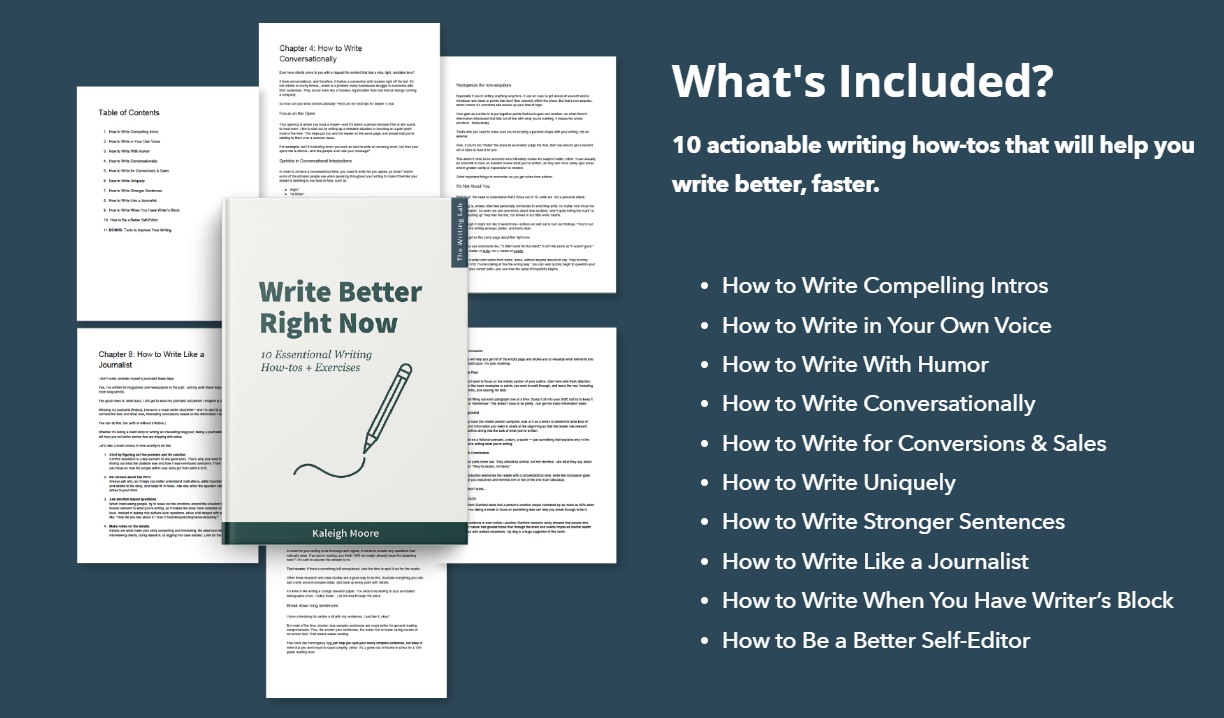
This approach works well when repurposing any type of content. The well-known B2B marketing strategist Ross Simmonds uses this approach to build new course materials from the posts he published in the past.
“When you’re building out new course material, the most impactful place to start is with the content you’ve already published in the past. Most creators underestimate how much value they’ve already published, yet it’s starting with this material where they can uncover two simple things: (1) content worth repurposing for the course and (2) insights around what content or ideas really resonate with your target market.” - Ross Simmonds
2. Set a goal for your content
Creating an ebook can help you achieve different goals—whether passive income, a popularity boost, or establishing yourself as a thought leader on a certain topic. Your job is to define your goals upfront, as that will guide all your other pricing, distribution, and promotion decisions.
If your goal is to reach as many people as possible and share your knowledge with them, you may want to lower the price point of your ebook and make it more accessible. However, if you want to educate your audience and create a comprehensive guide on a certain topic, adding a lower price point might seem confusing and even discourage your audience from buying, as they would consider it a low-quality asset.
I discussed this with Mary King, the author of Starting a Business: Step-by-Step Advice From Industry Experts. Mary agrees that you must be clear on your goal, as it will influence everything else—from the content you choose to include to your book cover.
“An ebook can drive revenue, purchases, or page views or help establish you as an authority on a topic. But those goals have different strategies. If you want to drive purchases, it makes sense to price your book low. But if you want to drive revenue, your price might naturally be higher. Establish your goal for the book as a project before you begin.” - Mary King
3. The Chapter vs. The Excerpt method
Okay, you’ve laid out all the ingredients and know what you want to achieve. Now what? It’s time to cook! How do you decide what to cook? You do so based on the ingredients you have in front of you.
You have two options at your disposal: The Chapter method vs. The Excerpt method.
If you have these pillar posts that serve almost as entire chapters, you can use them as master guides to each topic. From there, you can create chapters from these “hub” topics. And while you’ll use existing content, make sure to use fresh formatting (headers, bullets, definition boxes) to improve readability.
The question is: What if you don’t have large pillar posts to build an entire chapter around? In this case, use The Excerpt method. In other words, organize snippets from different articles into a cohesive content asset.
4. Edit to make it flow
The secret to great writing is great editing. Sometimes, creators overlook the importance of editing because they invest so much time and effort into the writing. However, editing is even more important in the realm of content repurposing, as it improves the flow between chapters and ensures a consistent tone.
If you’d like my secret formula to editing well, it would be this:
- Ask “Why?” as you read
- Look for context clues
- Seek examples, expert examples, and visuals,
- Cut fluff
- Use writing assistance (such as Grammarly) to make nit-picky edits.
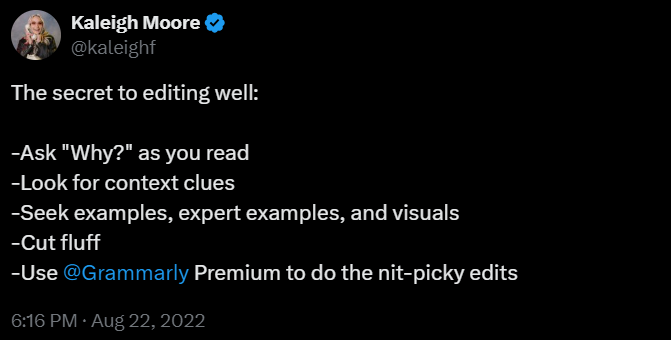
Keep in mind that blog posts have a different style than book chapters. Organize your posts into a single document, then find a way to have the chapters work together as a cohesive whole with a common thread running through the entire piece.
“When we compiled our book from blog posts, we wrote new intro and outro paragraphs for each chapter to guide readers from topic to topic. It wasn't an enormous lift; just a few paragraphs in each chapter--but it went a long way to creating a book-level experience.” - Mary King,
5. Add value with extra offerings
Readers can access your blog content for free, so you’re probably wondering: Why would someone buy your ebook? Spot on! To get someone to buy your repurposed content, you have to make it book-worthy.
What does it mean? Organize the content into easily digestible information, make an effort on the design, and add incentives to drive readers to purchase the ebook. Here’s how I did it—anyone who purchases my ebook receives six bonus lessons with writing exercises and worksheet sections to practice their new skills.
In my case, it was giving readers writing exercises and worksheets; something to put theory into practice. For your audience, it might be something different. But you have to give them something that will appeal to them—access to additional content in the book, on your blog, or a special offer for a product you sell.
6. Don’t be afraid to outsource part of the process
If you’ve been a content creator for quite some time, you might be used to the “one-man show.” But let me break it down for you—you don’t have to do everything yourself. Nine letters, one word: outsource.
“Outsource everything you don't know how to do/want to do (e.g., design, formatting for Kindle, editing, etc.) and focus on the writing and promotion.” - Ashley Cummings, freelance SaaS writer
To bring the quality to the next level, I’ve outsourced editing and design work for my ebook. Professional editors bring a fresh perspective and expertise, and they can also provide valuable feedback on clarity, tone, and consistency, helping to refine your message and make it more engaging for readers.
No matter how much you’ve mastered the art of self-editing, this level of scrutiny and refinement is often difficult to achieve on your own, as writers can become too close to their own work to identify areas that need improvement.
Similarly, outsourcing design work ensures that your ebook not only looks professional but also aligns visually with your brand or the intended aesthetic. You can find designers at every price point on freelancing sites like Upwork and Fiverr.
If you have a lot of graphics, tables, or other complex elements in your content, consider hiring a layout service. Some ebook components require custom CSS coding and other skills. Hiring professionals to layout your book will save you time (and likely a lot of frustration.)
7. Use your platforms as a testing ground
The biggest challenge of navigating life on the internet is being present on multiple platforms. But that can be the biggest opportunity as well. You can use your platforms to test what resonates with your audience. I do this all the time. Whenever I want to test something, I always launch it first to my newsletter audience, then through social channels. With time I have enough ingredients that passed the taste test to create an ebook without the heavy lifting.
This is exactly what writer Maddy French did as well when creating her book Writing for Humans and Robots.
“An email newsletter is a great way to test out ideas and get a sense of what your audience is most interested in. The topics I wrote about in my email newsletter definitely influenced the direction and specific inclusions in my book, Writing for Humans and Robots. As with any type of marketing, that back and forth with your audience is necessary for creating something your audience actually wants to consume.” - Maddy French
Nicholas Cole, founder of Digital Press, uses his popular content as lead generators. When compiling his book The Art and Business of Online Writing, he used his most popular articles as the basis for the book’s outline.
“I treat 100% of what I write online as data mining content. As these social platforms tell me what works, I refine and double down on these topics, building out ‘proven’ libraries based on what audiences want.” - Nicholas Cole
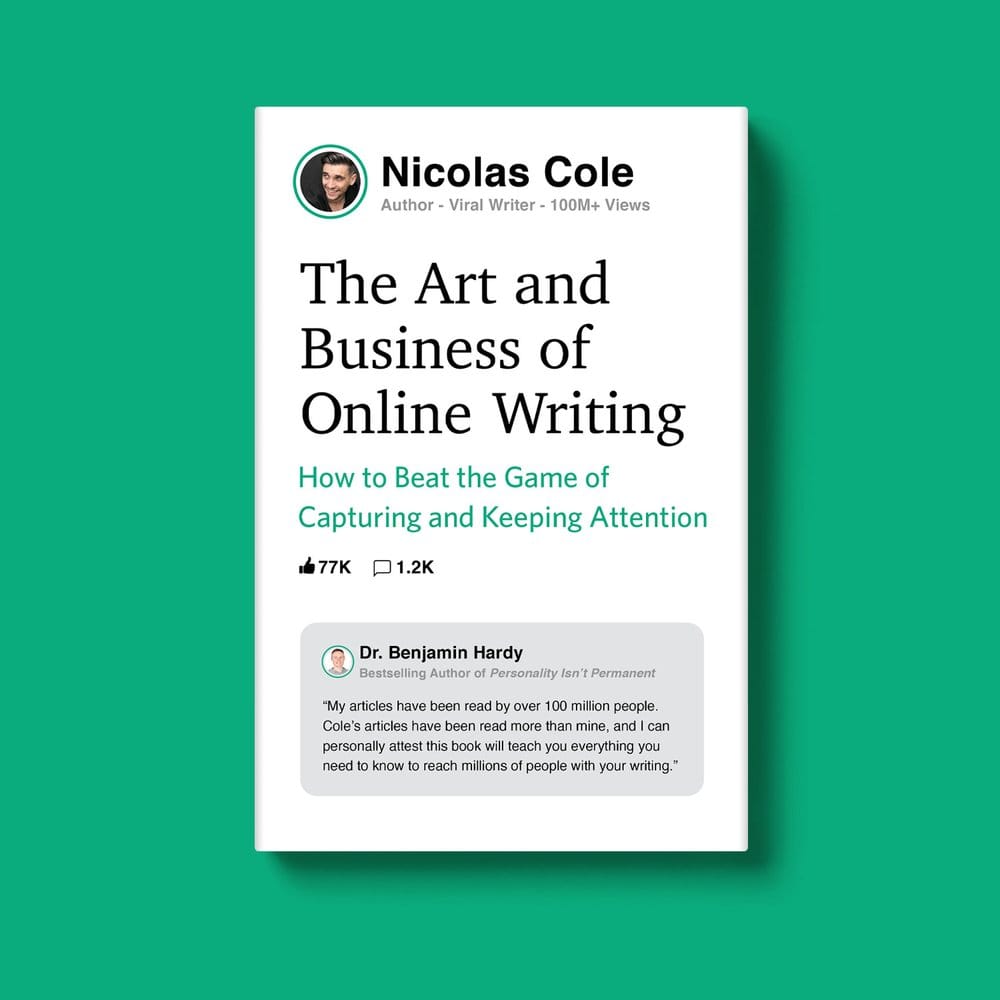
5 Tips on What I’ve Learned About Making Money with Ebooks
Now that I’ve shared my step-by-step process for repurposing content into an ebook, it’s time to uncover the tips and tricks I’ve learned from publishing my eBook Write Better Right Now.
1. Introduce it at a discounted rate to capitalize on initial excitement
Offer the ebook at a lower price initially to attract people eager to read your content. Your initial goal is to build excitement and get more people to read your ebook. Once you have reviews and testimonials, promoting your ebook becomes much easier.
2. Utilize freebies
Give people a free chapter, then put them into an automated email nurturing sequence to sell hands-off over the coming days. Provide a teaser chapter for free to hook potential buyers, then use automated emails to gradually showcase the value and benefits of the full ebook.
3. Experiment with different pricing tiers
Test out pricing tiers and levels of depth (low, med, high) to give buyers different levels of insight and affordability (the quick guide vs. the deep dive). By offering the ebook at various price points with different levels of content depth you are catering to a broader audience with varying needs and budgets.
4. Bundle it with other resources to make it more valuable
Combine the ebook with additional resources such as templates, worksheets, or bonus content to enhance its perceived value and appeal to a wider audience. I have a couple of content bundles available for purchase. Combining multiple assets gives a sense of higher value and urges people to buy.
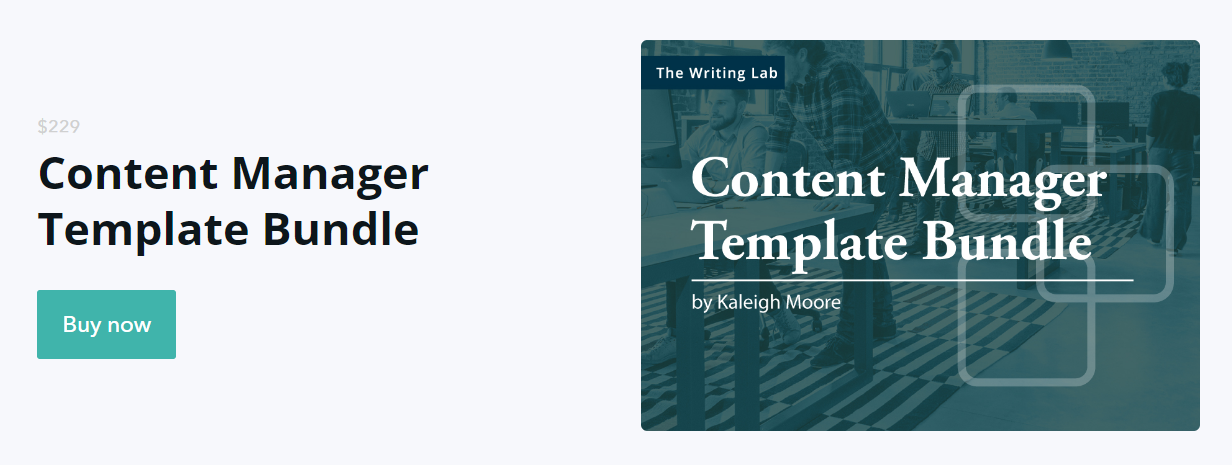
5. Try flash sales where you offer it at a slashed price for a short time frame (24 hours)
Occasionally, discount the ebook significantly for a brief period to create urgency and encourage immediate purchases from potential buyers who are on the fence. You can also organize this type of campaign around seasonal sales days such as Black Friday, which is now equally popular for digital product discounts as much as for physical ones.
How to Make the Most of Your Ebook
Turning your existing content into an ebook is just the tip of the iceberg. You can use many different strategies to make the most out of publishing an ebook. Here are some that come to mind:
Create a paid community and sell even more digital products around that
Establishing a paid community allows for ongoing engagement and upselling opportunities beyond the eBook, fostering a loyal customer base interested in related digital products. Paid communities can be another great way to earn passive income. For instance, you could charge a subscription for entering your whop community chat, and a flat fee for access to your ebooks.
Do a podcast or video chat tour around the book’s launch to build buzz
Engaging in podcast interviews and video chats amplifies visibility and interest in the ebook, leveraging the existing audiences of other creators to expand your reach and attract new readers. This can also help you grow your audience long-term.
Build in public to create an engaged audience
Writing online is like building in public—besides testing what resonates with your audience, it also gives you accountability to deliver on your promise. Sharing your writing process and insights online builds trust and connection with your audience while receiving valuable feedback that helps refine your content and ensure its relevance.
Create a waitlist to build engagement
By creating a waitlist, you generate anticipation and exclusivity around the ebook launch, encouraging early sign-ups likely to convert into paying customers and allowing you to gauge and build interest before the official release. This is what Eddie Shleyner did for his book. He compiled his most compelling “micro” essays about copywriting, marketing, and creativity into a book (and an ebook) and created a waitlist for people interested in learning more.
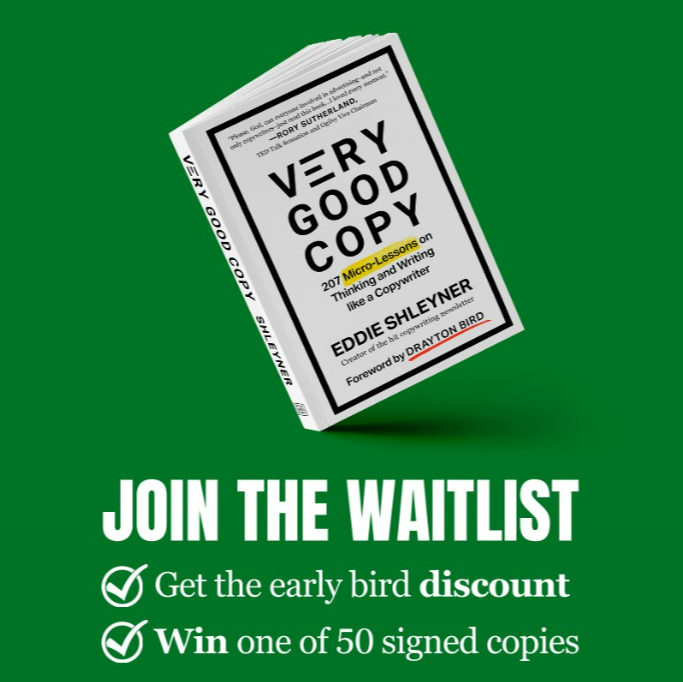
Where to Sell Your Ebook
So you’ve recycled your old blog posts, newsletters, and social media posts, you’ve created an ebook, and now what? It’s time to put it out in the world. To do so, you need a platform that people can access to get your ebook. While there are plenty of alternatives out there, I’m sharing the most popular ones that can help you get more sales.
1. 🏆Whop.com
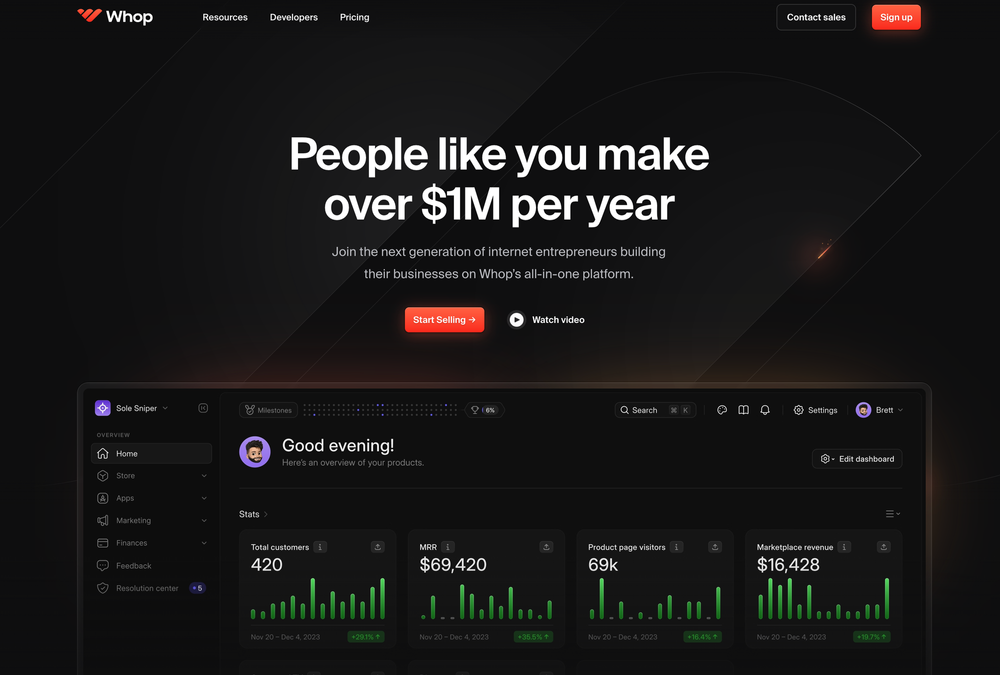
Whop is home to plenty of ebook sellers, including topics such as finance, personal growth, and even fiction novels. What makes it so good is that even if you’re just starting out, Whop will help you grow your ebook business by allowing you to create a whole ecosystem around it, with options to create a community (online book club anyone?), forum, online course, paywalled content, and even host giveways and video calls, all from within your whop hub.
The best part about Whop is that you don’t have to worry about handling and processing orders, as Whop will complete the entire ebook fulfillment process for you. Several features and apps for business growth and the easy-to-use API with 24/7 customer support make it the obvious choice for everyone looking for a platform to sell ebooks.
Plus, Whop only takes a 3% cut of sales, with no platform subscription or sign-up fees.
2. Podia
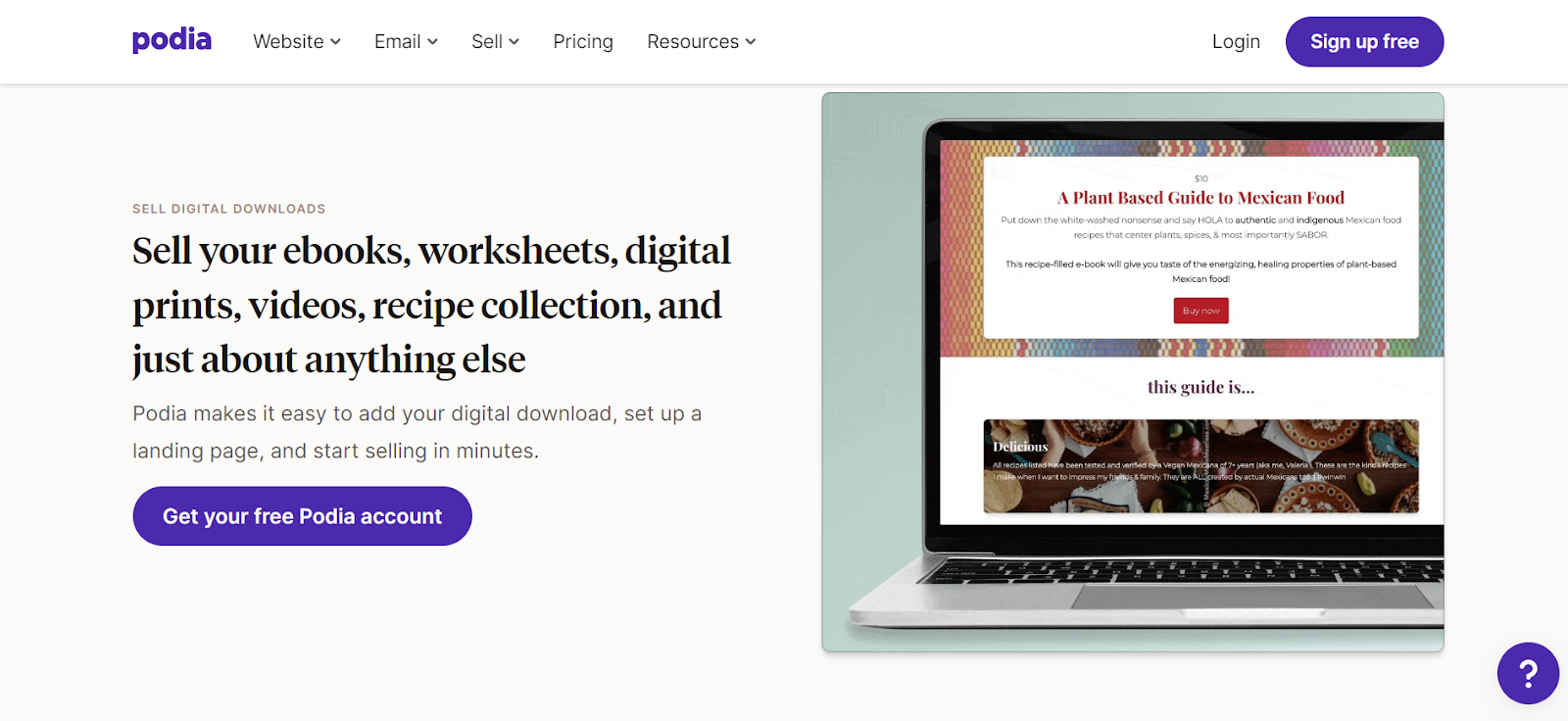
Podia is an ecommerce platform for all types of creators, including ebook authors. Like Whop, creators can use the platform to sell a wide variety of digital products, including ebooks, courses, and webinars. Podia has an easy-to-setup online store with several attractive templates to choose from.
Besides this, Podia also has a Community feature, which can help create a group around your ebook and act as an online book club. One thing to keep in mind is that email marketing comes as an optional add-on.
There are many plans to choose from, with the free plan taking a 10% cut of your sales, and the highest-level plan (Shaker) costing $89 a month but with no cut of your sales.
3. Shopify
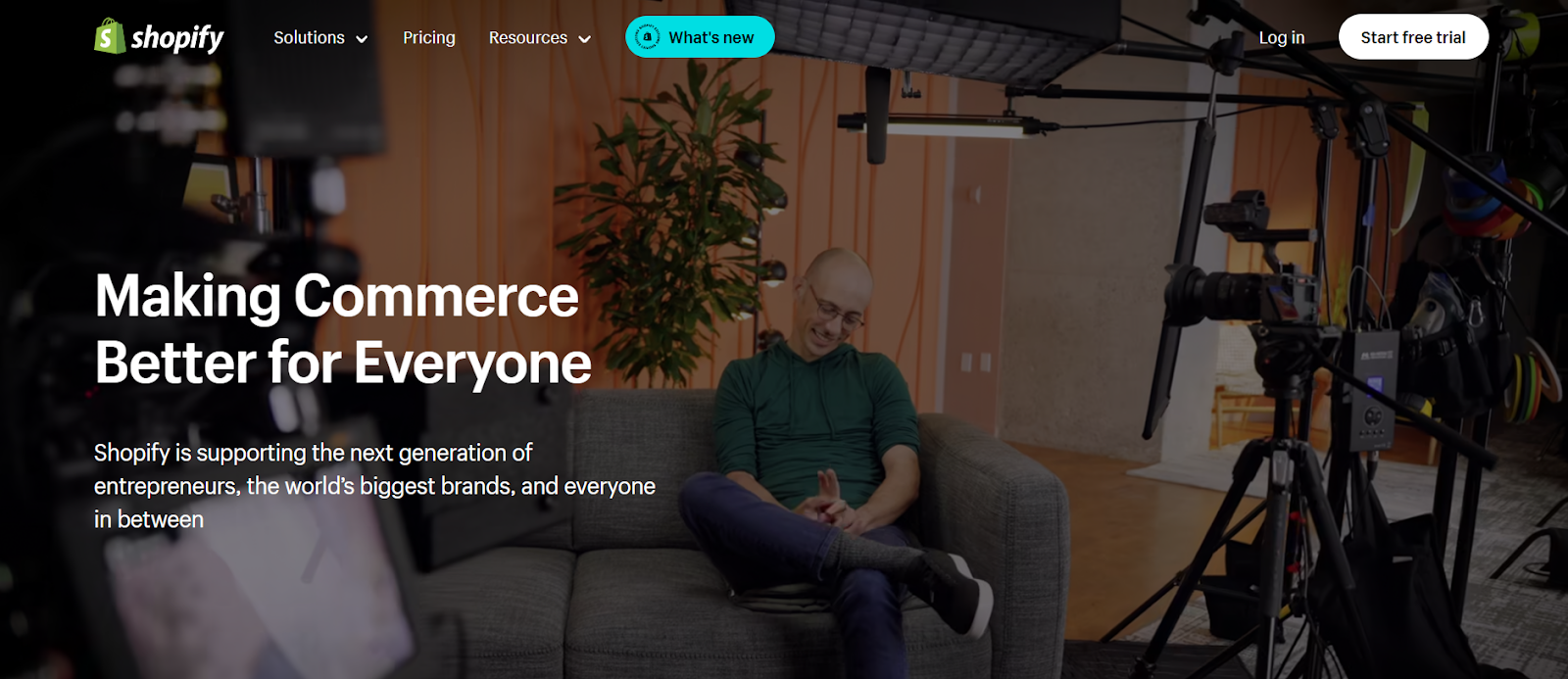
As one of the leading ecommerce platforms, Shopify also makes for a good ebook selling platform. You can create and customize your storefront to fit your style and make your store more user-friendly or add more functions through several plugins found on the Shopify app.
Shopify also offers mobile-friendly stores to help with device accessibility and several marketing tools to promote and grow your store.
However, there are transaction fees if you don’t use Shopify’s gateway and they have expensive subscription plans, with the advanced plan costing $299 a month.
4. Amazon Kindle Direct Publishing
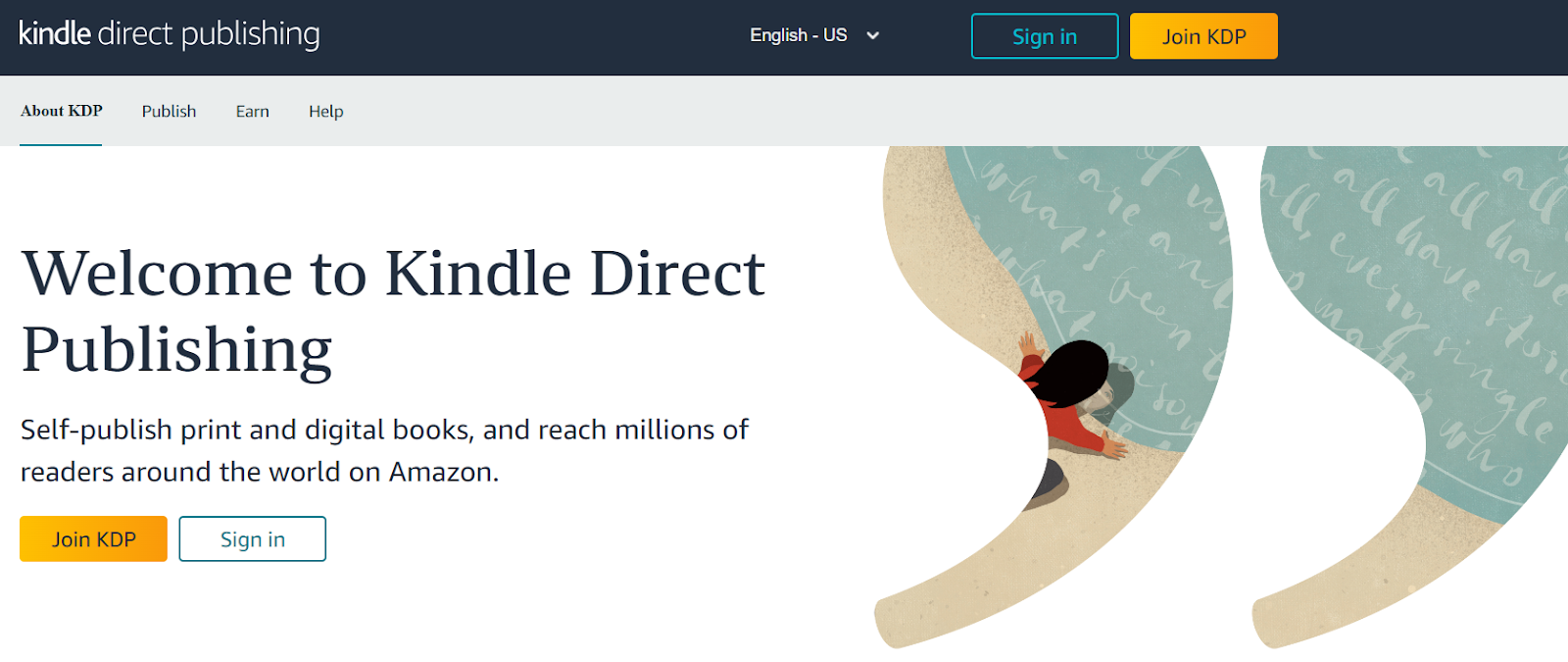
Another alternative for publishing your ebook is Amazon, with its Kindle Direct Partnership (KDP) program. The platform allows you to take your first steps in self-publishing and list your ebook on the platform for free, and you don’t need to manage an online store, as Amazon does the work for you.
However, you only get a percentage of royalties (35% to 70%) depending on how much your ebook costs. So, while you get exposure to a massive worldwide market of potential readers, you’ll only get a percentage of your revenue depending on your eBook’s price.
Another thing to remember if you’re choosing Amazon to publish your ebook is that they have standards for internal links in ebooks and reserve the right to deactivate links from ebooks if they are deemed suspicious.
Start Earning Passive Income With Your Ebook
If you’ve made it this far—congrats! You’re on the right path to recycle your existing content and create an ebook to generate passive income.
We live in the era of content proliferation, and it’s up to you to work smarter and make the most of the content you produce. Using your long-form content as the framework/script will give you a solid foundation for your next iteration in a different format.
Once you master the art of repurposing, you can scale your content without starting from scratch. You can create a whop to sell your ebooks, courses, premium content, and paid blog posts from one space. Sounds exciting? Start selling your eBooks with Whop today.
